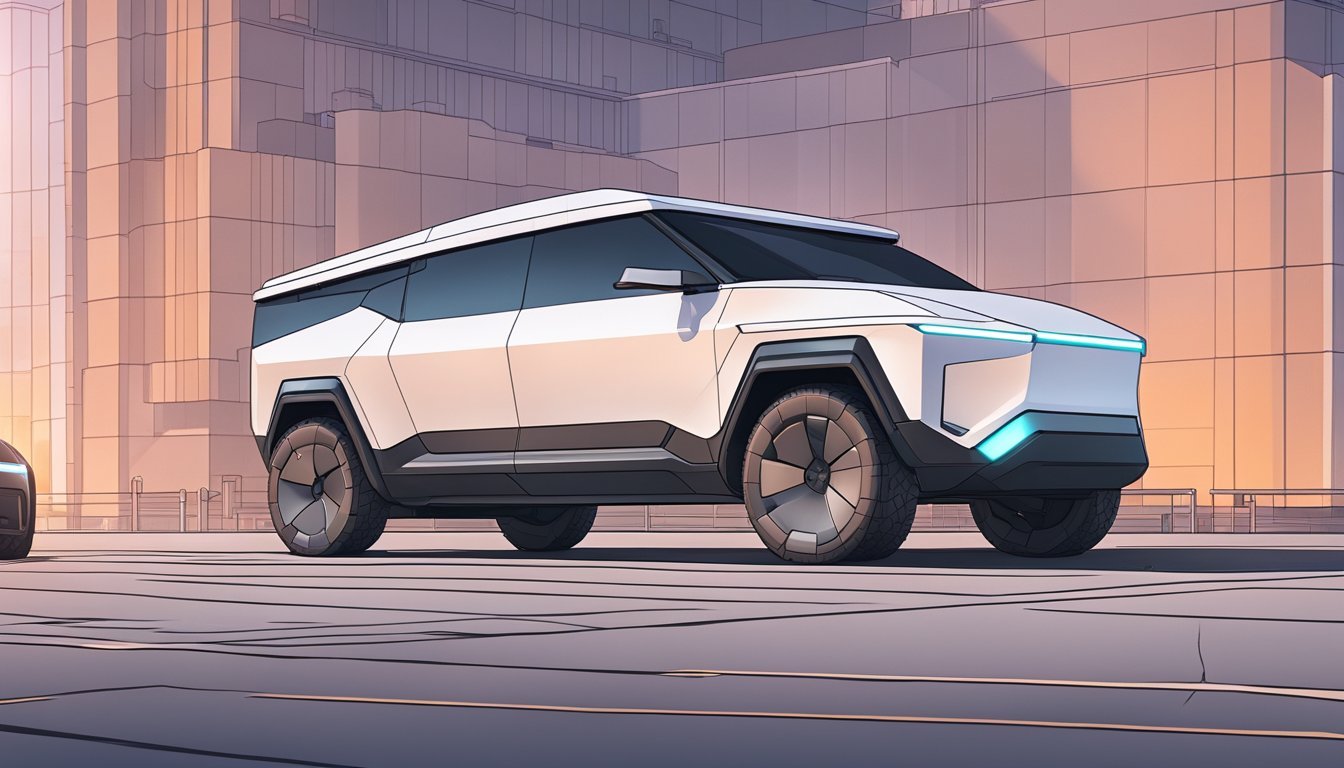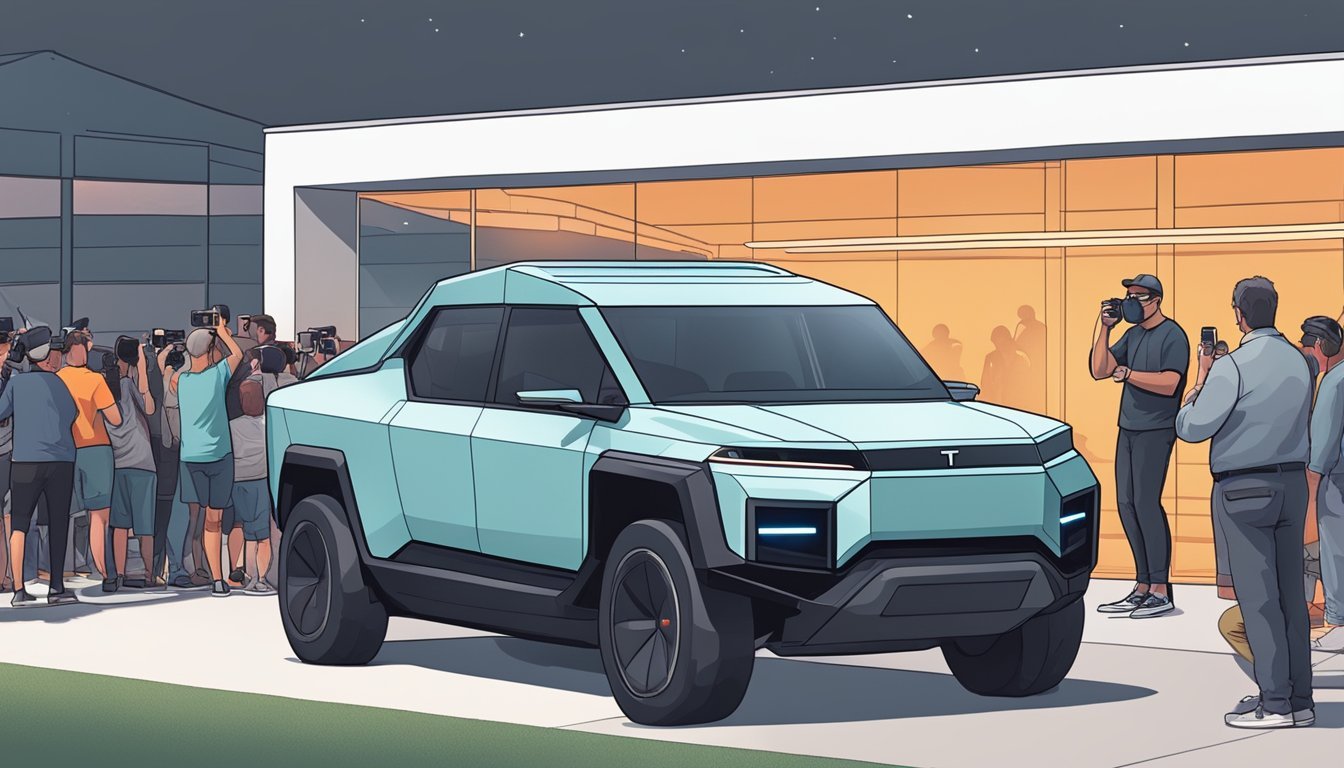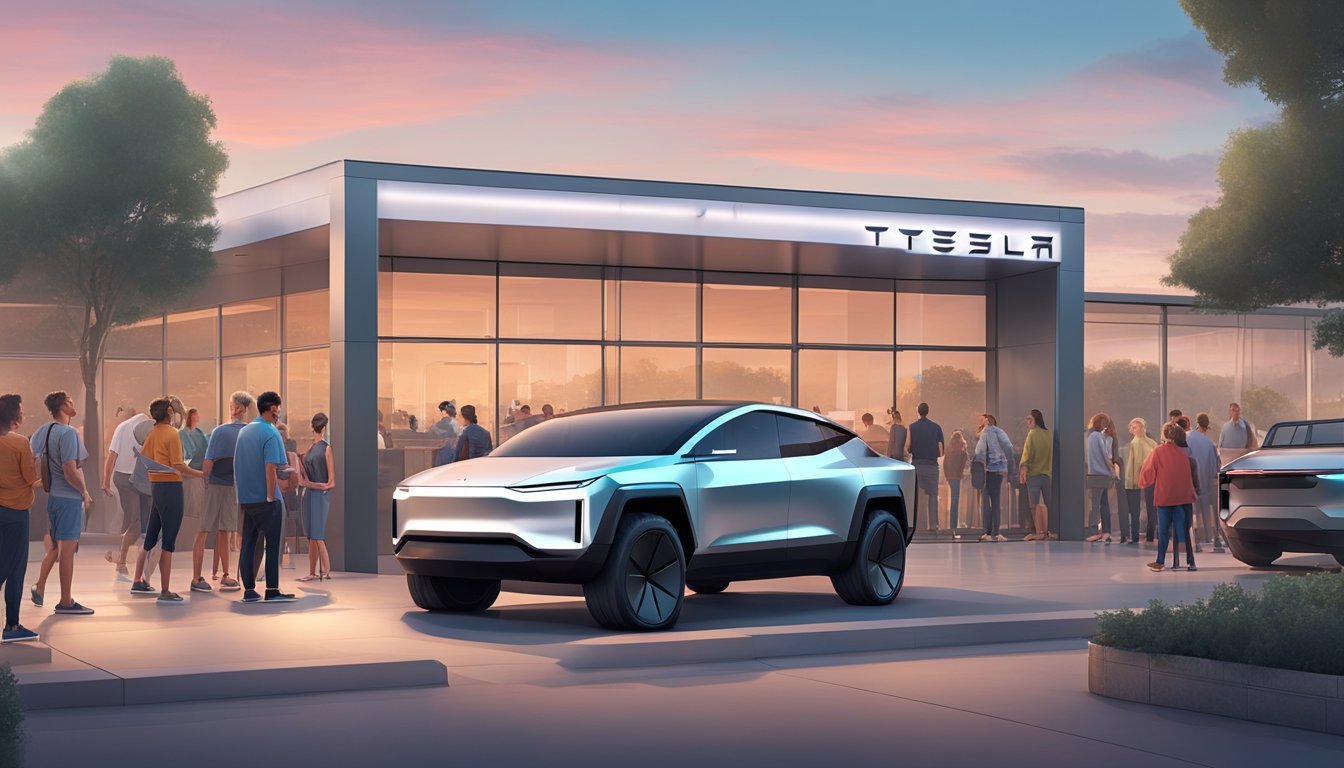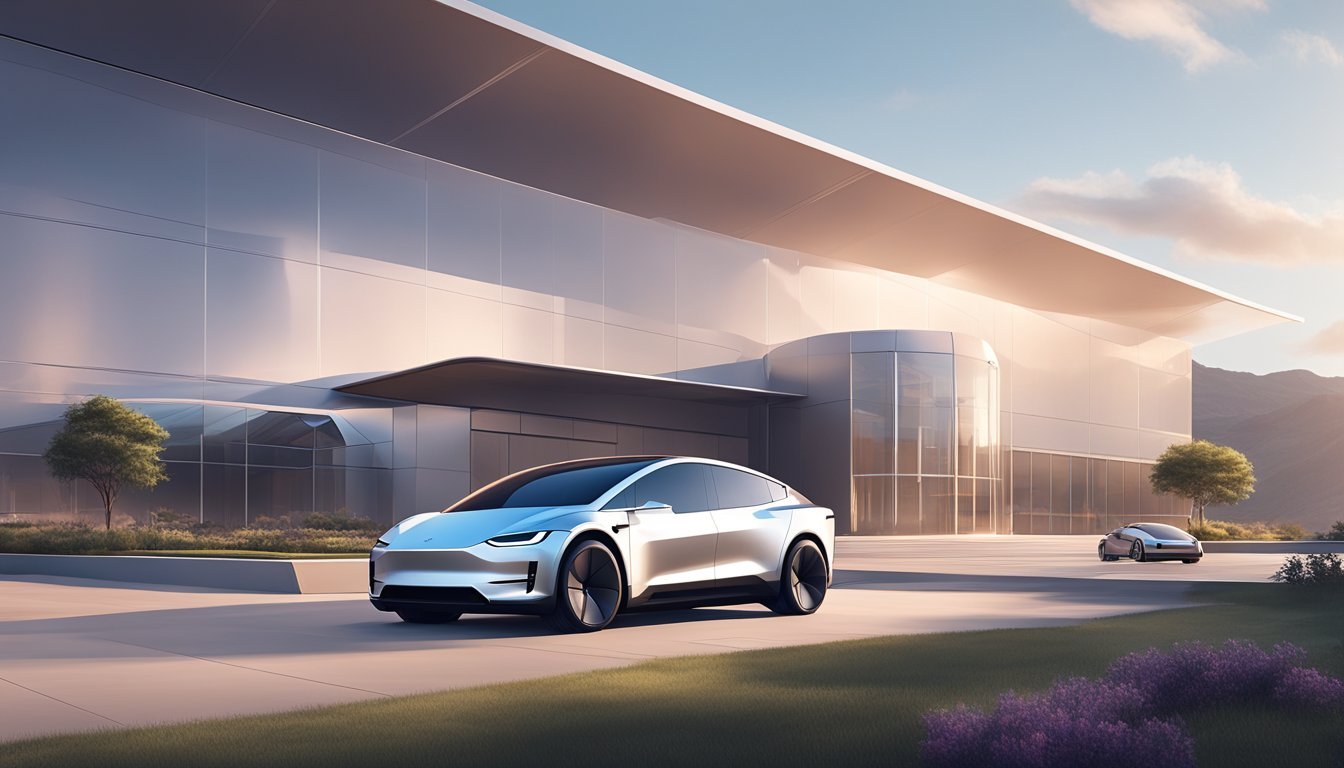Tesla Austin Cybertruck: The Futuristic Pickup Revolutionizing the Market!
Tesla's futuristic Cybertruck is finally rolling off production lines in Austin, Texas. The electric pickup's unique stainless steel exterior and sci-fi-inspired design have generated intense interest since its 2019 unveiling. Tesla's Gigafactory Texas, the company's global headquarters, is now manufacturing the Cybertruck alongside the Model Y.
The Cybertruck's arrival marks Tesla's entry into the competitive pickup truck market. Its unconventional styling and promised capabilities aim to disrupt the traditional truck segment. Tesla claims the top-tier model will accelerate from 0-60 mph in under 3 seconds while offering a range of over 500 miles.
Austin has become a focal point for Tesla's expansion. The sprawling Gigafactory Texas spans nearly 10 million square feet and employs thousands of workers. As Cybertrucks begin reaching customers, all eyes are on Austin to see how Tesla's bold experiment in pickup design fares in the real world.
Tesla's Expansion to Austin
Tesla's move to Austin marks a significant milestone in the company's growth. The establishment of the Gigafactory in Travis County has positioned Austin as a key hub for Tesla's manufacturing operations.
Impact on the Austin Economy
Tesla's Gigafactory has created numerous job opportunities in Austin. The facility, spanning 10 million square feet, employs thousands of workers. This influx of jobs has boosted the local economy and attracted talent to the area.
The company plans to invest over $700 million in expansion projects at the Austin Gigafactory. This investment is expected to further stimulate economic growth in the region.
Tesla's presence has also attracted suppliers and related businesses to Austin. This ecosystem development strengthens the city's position as a tech and manufacturing center.
Collaborations and Partnerships
Tesla has engaged with local educational institutions to develop workforce training programs. These collaborations aim to create a skilled labor pool for the Gigafactory's operations.
The company has worked closely with Travis County officials to ensure smooth integration into the community. This partnership has facilitated infrastructure improvements and addressed environmental concerns.
Tesla has also explored collaborations with Austin-based tech companies. These partnerships focus on innovation in areas such as battery technology and autonomous driving systems.
The Cybertruck Phenomenon
Tesla's Cybertruck has captured public attention with its futuristic design and innovative features. This electric pickup truck represents a bold departure from traditional truck aesthetics while promising cutting-edge performance.
Design and Features
The Cybertruck's angular, stainless steel exoskeleton sets it apart visually from other vehicles on the road. Its unpainted, cold-rolled steel body offers exceptional durability and resistance to dents and corrosion. The truck features a "vault-like" storage area with a motorized cover for secure cargo transport.
Tesla claims the Cybertruck will offer impressive towing capacity, ranging from 7,500 to 14,000 pounds depending on the configuration. The vehicle's adaptive air suspension can adjust ride height for improved off-road capability or highway efficiency.
The interior boasts a minimalist design with a 17-inch touchscreen controlling most vehicle functions. Tesla plans to equip the Cybertruck with advanced driver assistance features, potentially paving the way for future autonomous capabilities.
Market Comparison
As an electric pickup, the Cybertruck enters a competitive market alongside offerings from established automakers and new entrants. Its closest rivals include the Ford F-150 Lightning, Rivian R1T, and GMC Hummer EV.
The Cybertruck's starting price is positioned competitively within the electric pickup segment. Tesla aims to differentiate its offering through longer range estimates, faster acceleration, and unique features like the stainless steel body.
While traditional truck buyers may be hesitant to embrace the Cybertruck's unconventional design, Tesla's strong brand appeal and tech-focused approach could attract a new demographic to the pickup market. The vehicle's performance claims, if realized in production models, would place it at the forefront of electric truck capabilities.
Manufacturing the Cybertruck
Tesla's Gigafactory in Austin, Texas serves as the primary production hub for the Cybertruck. The facility employs advanced manufacturing techniques and a streamlined supply chain to bring this innovative electric vehicle to market.
Production Processes
The Cybertruck's unique exoskeleton design requires specialized production methods. Tesla utilizes large-scale casting machines to create single-piece components, reducing complexity and improving structural integrity. Robotic welding systems join the vehicle's ultra-hard 30X cold-rolled stainless steel panels with precision.
Advanced paint shops apply durable finishes to protect the Cybertruck's exterior. The assembly line incorporates automated guided vehicles (AGVs) to move partially completed trucks between stations efficiently. Tesla's production system emphasizes vertical integration, with many components manufactured in-house to maintain quality control and reduce costs.
Supply Chain Management
Tesla's approach to supply chain management for the Cybertruck focuses on localization and sustainability. The company sources raw materials and components from suppliers near the Austin Gigafactory when possible, reducing transportation costs and environmental impact.
Key partnerships with battery manufacturers ensure a steady supply of high-capacity cells for the Cybertruck's powertrain. Tesla's in-house chip design team works closely with semiconductor fabricators to secure essential microcontrollers and processors.
Inventory management systems use artificial intelligence to predict demand and optimize stock levels. This approach helps Tesla maintain production flexibility and respond quickly to market changes or supply disruptions.
Elon Musk's Vision and Leadership
Elon Musk's leadership at Tesla has been marked by bold strategic decisions and a relentless focus on innovation. His vision has propelled the company to the forefront of the electric vehicle revolution.
Strategic Decisions
Musk made the pivotal choice to relocate Tesla's headquarters from Palo Alto to Austin, Texas. This move aimed to capitalize on Texas's business-friendly environment and expand manufacturing capabilities.
The decision to build Gigafactory Texas in Austin demonstrated Musk's commitment to scaling production. This facility is crucial for manufacturing the Cybertruck and other Tesla models.
Musk has been hands-on in Austin, personally test-driving Cybertruck prototypes around the city. This direct involvement showcases his dedication to product development and quality control.
Innovation at Tesla
Under Musk's leadership, Tesla has pushed the boundaries of electric vehicle technology. The Cybertruck's unconventional design reflects his willingness to challenge industry norms.
Musk has emphasized the integration of artificial intelligence in Tesla vehicles. This focus on AI aims to enhance autonomous driving capabilities and overall vehicle performance.
Tesla's approach to innovation extends beyond vehicles. The company's work on energy storage solutions and solar technology aligns with Musk's vision of sustainable energy systems.
Musk's openness about challenges, such as acknowledging production difficulties with the Cybertruck, reflects a transparent leadership style. This approach keeps investors and customers informed about Tesla's progress and setbacks.
Market Analysis and Sales Projections
Tesla's Cybertruck enters a competitive electric pickup truck market with strong pre-order numbers and a unique design. Pricing and production capacity will be key factors in its sales performance.
Pre-Order Data
Tesla reported over 1 million pre-orders for the Cybertruck before its launch. This indicates significant initial interest from consumers. However, pre-orders required only a small refundable deposit, so conversion to actual sales may vary.
The starting price of $60,990 is higher than originally announced, which could impact demand. Some reservation holders may reconsider their purchase due to the price increase.
Tesla's production capacity for the Cybertruck at its Austin factory will determine how quickly it can fulfill orders. The company aims to ramp up production throughout 2024 and 2025.
Competitive Landscape
The Cybertruck faces competition from established automakers and EV startups in the electric pickup truck segment. Key rivals include:
Ford F-150 Lightning
Rivian R1T
GMC Hummer EV
Each competitor offers unique features and price points. The Cybertruck's distinctive design and Tesla brand recognition may help it stand out in the market.
Pricing for the Cybertruck is higher than some competitors, potentially limiting its market share. However, Tesla's strong brand loyalty and Supercharger network could attract buyers despite the higher cost.
Production challenges and supply chain issues may impact all manufacturers in this segment, affecting market dynamics and availability.
Global Expansion Plans
Tesla's ambitious growth strategy extends beyond its Texas Gigafactory. The company aims to strengthen its global presence and increase market share through strategic international expansion and exports.
International Markets
Tesla has set its sights on key international markets to fuel growth. The automaker is actively exploring opportunities in New Zealand, viewing it as a promising market for electric vehicles. Tesla plans to establish a stronger retail and service network in the country to support sales of its vehicles, including the Cybertruck once production rampsup.
The company is also eyeing other regions for potential Gigafactory locations. Tesla's recent announcement of a new facility in Mexico signals its commitment to expanding manufacturing capabilities globally. This move will allow Tesla to better serve North American markets and potentially export to other regions.
Export Strategy
Tesla's Texas Gigafactory plays a crucial role in the company's export strategy. As production of the Cybertruck begins, Tesla intends to use the Texas facility as a hub for exporting the vehicle to international markets, including New Zealand.
The company is developing logistics networks to efficiently transport vehicles from Texas to overseas destinations. Tesla aims to optimize shipping routes and streamline customs processes to reduce costs and delivery times. By leveraging the Texas Gigafactory's production capacity, Tesla can meet growing global demand for its vehicles while maintaining quality control.
Tesla is also exploring partnerships with local distributors in target markets to enhance its export capabilities and provide better after-sales support for international customers.
Ownership Experience
The Tesla Cybertruck ownership experience has been mixed, with some owners praising its unique features while others noting challenges. Customer service and maintenance aspects have both received attention from early adopters.
Customer Service & Support
Tesla's customer service for Cybertruck owners has been a point of discussion. Some owners report positive interactions with Tesla representatives, praising their responsiveness and knowledge about the electric pickup. Others have experienced frustration with long wait times for appointments and limited availability of Cybertruck-specific parts.
Tesla's mobile service has been well-received by many Cybertruck owners. Technicians can address minor issues at the owner's location, saving time and inconvenience. The company's over-the-air updates have also been highlighted as a benefit, allowing for software improvements and new features without visiting a service center.
Maintenance and Upkeep
Cybertruck maintenance has proven to be different from traditional pickup trucks. The electric powertrain requires less regular servicing, with no oil changes or traditional transmission maintenance needed. This has led to lower overall maintenance costs for many owners.
However, some Cybertruck-specific components have posed challenges. Replacement parts for the unique stainless steel body panels can be costly and difficult to source. Tire wear has been a concern for some owners, with the vehicle's weight and instant torque contributing to faster tread degradation.
The Cybertruck's self-diagnostics system has been praised for alerting owners to potential issues early. This proactive approach has helped prevent more serious problems and reduced unexpected breakdowns.
Technological Innovations
Tesla's Cybertruck showcases cutting-edge advancements in electric vehicle technology. The innovative pickup truck integrates sophisticated software and robust safety features to deliver a futuristic driving experience.
Software Updates
The Cybertruck leverages Tesla's over-the-air software update capability. This allows the vehicle to receive new features and improvements remotely. Owners can access enhanced functionality without visiting a service center.
The electric pickup truck's software controls its adaptive air suspension. This system can raise or lower the vehicle's ride height based on driving conditions. It optimizes aerodynamics at highway speeds and provides increased ground clearance for off-road use.
Tesla's Autopilot suite is integrated into the Cybertruck. It offers advanced driver assistance features like automatic lane changing and self-parking. The software continually improves through machine learning algorithms and real-world data collection.
Safety Features
The Cybertruck's exoskeleton design provides exceptional structural integrity. Its ultra-hard stainless steel body resists dents and damage. This innovative construction aims to enhance passenger protection in the event of a collision.
Tesla equipped the Cybertruck with an array of cameras and sensors. These provide a 360-degree view around the vehicle, aiding in obstacle detection and collision avoidance. The electric pickup's low center of gravity, due to its battery placement, contributes to improved stability and rollover resistance.
Advanced traction control systems optimize the Cybertruck's performance in various driving conditions. These systems adjust power delivery to each wheel independently, enhancing grip on slippery surfaces or during off-road adventures.
Environmental Implications
Tesla's Cybertruck production at the Austin Gigafactory raises important questions about sustainability and environmental impact. The facility's practices and the vehicle's lifecycle have significant implications for local ecosystems and global carbon emissions.
Sustainability Efforts
Tesla implements various sustainability measures at its Austin Gigafactory. The facility utilizes solar panels and energy storage systems to reduce reliance on the grid. Water recycling programs aim to minimize consumption in the drought-prone Texas region.
However, recent reports suggest potential environmental concerns. The Wall Street Journal indicates Tesla may have released pollutants into local water sources. This highlights the need for rigorous oversight and transparency in manufacturing processes.
The company's use of new state legislation to exempt itself from Austin's environmental regulations has sparked debate. Critics argue this could lead to reduced accountability, while Tesla maintains its commitment to sustainable practices.
Carbon Footprint Analysis
The Cybertruck's all-electric design aims to reduce overall carbon emissions compared to traditional pickup trucks. Its stainless steel body potentially offers durability advantages, possibly extending the vehicle's lifespan and reducing manufacturing frequency.
Tesla claims the Austin-built Cybertruck will have a lower carbon footprint than conventional vehicles. This is attributed to the use of renewable energy in production and the absence of direct emissions during operation.
However, the true environmental impact depends on factors like battery production, raw material sourcing, and the local electricity mix used for charging. A comprehensive lifecycle analysis is needed to accurately assess the Cybertruck's carbon footprint.






